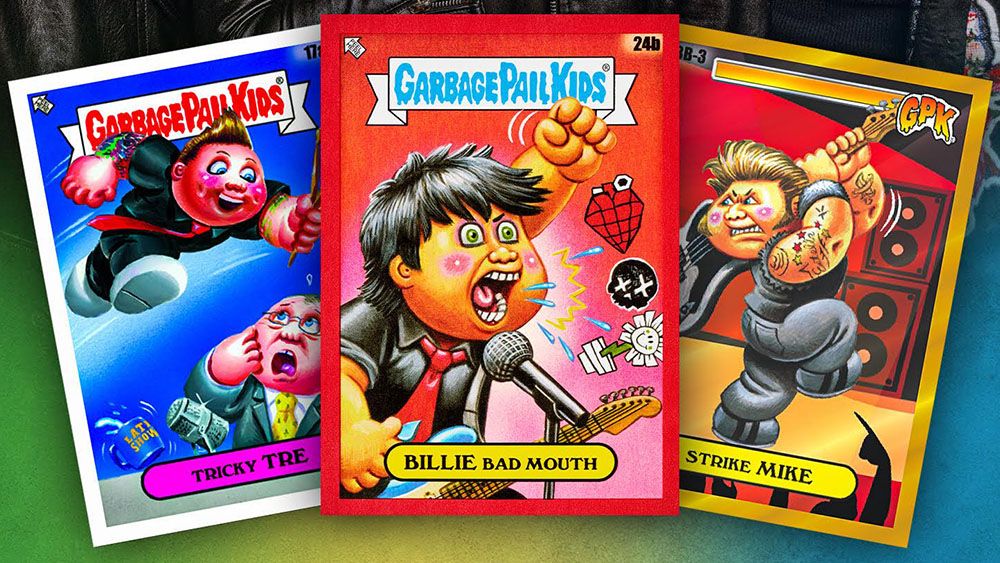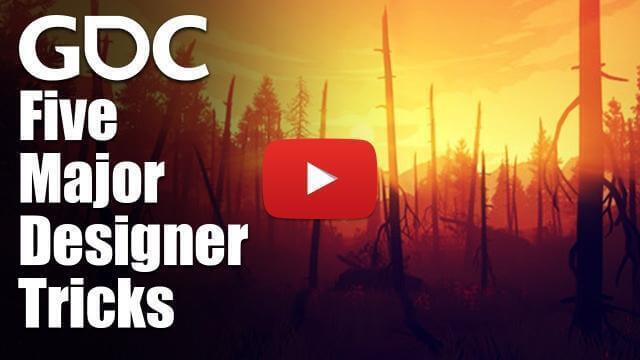The Best Hidden-Gem Etsy Shops for Fans of Farmhouse Style
Becky Luigart-Stayner for Country LivingCountry Living editors select each product featured. If you buy from a link, we may earn a commission. Why Trust Us?Like a well-made quilt, a classic farmhouse aesthetic comes together gradually—a little bit of this, a touch of that. Each addition is purposeful and personal—and isn’t that what home is all about, really? If this type of slowed-down style speaks to you, you're probably already well aware that Etsy is a treasure trove of finds both new and old to fit your timeless farmhouse aesthetic. But with more than eight million active sellers on its marketplace, sometimes the possibilities—vintage feed sacks! primitive pie safes! galvanized grain scoops!—can quickly go from enticing to overwhelming.To better guide your search for the finest farmhouse furnishings, we’ve gathered a go-to list of editor-and designer-beloved Etsy shops which, time and again, turn out hardworking, homespun pieces of heirloom quality. From beautiful antique bureaus to hand-block-printed table linens, the character-rich wares from these sellers will help you design the farmhouse of your dreams, piece by precious piece. Related Stories For Antique AmericanaAcorn and Alice Every good old-fashioned farmhouse could use some traditional Americana to set the tone, and this Pennsylvania salvage shop offers rustic touches loaded with authentic antique allure. Aged wooden wares abound, as well as a grab bag of cotton and burlap feed sacks, perfect for framing as sets or crafting into footstool covers or throw pillows. For French Country TextilesForest and LinenThere’s nothing quite like breezy natural fabrics to make you want to throw open all the windows and let that country air in while the pie cools. Unfussy and lightweight, the hand-crafted curtains, bedding, and table linens from these Lithuanian textile experts have a classic understated quality that would be right at home in the coziest guest room or most bustling kitchen. Warm, welcoming hues range from marigold yellow to cornflower blue, but soft gingham checkers and timeless French ticking feel especially farm-fresh. Our current favorite? These cherry-striped country cafe curtains. Becky Luigart-Stayner for Country LivingVintage red torchons feel right at home in a farmhouse kitchenFor Rustic RugsOld New HouseWhether or not you’re lucky enough to have gorgeous wide-plank floors, an antique area rug or runner can work wonders for giving a room instant character and warmth. This fifth-generation family-run retailer specializes in importing heirloom hand-knotted carpets dating back to the 1800s, with a focus on traditional designs from the masters in Turkey, India, Persia, and more. Their vast variety of sizes and styles offers something for every aesthetic, with one-of-a-kind patterns ranging from distressed neutrals to chain-stitched florals to ornate arabesques. For Pillows and ProvisionsHabitation BohemeIn true farmhouse fashion, this Indiana shop has curated an enticing blend of handcrafted and vintage homewares that work effortlessly well together. A line of cozy hand-stitched linen pillow coverssits prettily alongside a mix of found objects, from patinated brass candlesticks and etched cloisonné vases to sturdy stoneware crockery and woven wicker baskets. For Elegant Everyday DishwareConvivial ProductionSimple, yet undeniably stunning, the handcrafted dinnerware from this Missouri-based ceramist is designed with durability in mind. Produced in a single, time-tested shade of ivory white glaze, these practical stoneware cups, bowls, and plates make the perfect place settings for lively farm-to-table feasts with friends and family. Beautifully balancing softness and heft, each dish is meant to feel comfortable when being held and passed, but also to look attractive when stacked upon open shelving. For English Country Antiques1100 West Co.This Illinois antiques shop is stocked with all manner of versatile vintage vessels culled from the English countryside, from massive stoneware crocks to charming little escargot pots. Their collection of neutral containers can be adapted for nearly any provincial purpose, but we especially love their assortment of old advertising—from toothpaste pots to marmalade jars and ginger beer bottles galore—for a nice little nod to the quintessential country practice of repurposing what you’ve got. Brian Woodcock/Country LivingPretty English ironstone will always have our heart.For a Cozy GlowOlde Brick LightingConstructed by hand from cord to shade, the vintage-inspired lighting produced by this Pennsylvania retailer is a tribute to the iconic quality and character of old American fixtures. Nostalgic design elements include hand-blown glassand finishes ranging from matte black to brushed nickel and antique brass. To create an authentic farmhouse ambiance, check out their gooseneck sconces, enameled red and blue barn lights, and milky white striped schoolhouse flush mounts. For Enduring ArtifactsThrough the PortholeThe weathered, artisan-made wares curated by this California husband-and-wife duo have been hand-selected from around the globe for their time-etched character. From gorgeous gray-black terracotta vases and rust-colored Turkish clay pots to patinated brass cow bells and rustic reclaimed elm stools, each item is a testament to the lasting beauty of classic materials, with storied sun-bleaching and scratches befitting the most beloved, lived-in rooms. For Winsome Wall ArtEugenia Ciotola ArtThrough graceful brushstrokes and textural swirls of paint, Maryland-based artist Eugenia Ciotola has captured the natural joy of a life that’s simple and sweet. Her pieces celebrate quiet scenes of bucolic beauty, from billowing bouquets of peonies to stoic red barns sitting in fields of wavy green. For a parlor gallery or gathering space, we gravitate toward her original oils on canvas—an impasto still life, perhaps, or a plainly frocked maiden carrying a bountiful bowl of lemons—while her stately farm animal portraitswould look lovely in a child’s nursery.For Time-Tested Storage SolutionsMaterials DivisionFunction is forefront for this farmhouse supplier operating out of New York, whose specialized selection of vintage provisions have lived out dutiful lives of purpose. Standouts include a curated offering of trusty antique tool boxes and sturdy steel-clad trunks whose rugged patina tells the story of many-a household project. Meanwhile, a hardworking mix of industrial wire and woven wood gathering baskets sits handsomely alongside heavy-duty galvanized garbage bins and antique fireplace andirons.For Pastoral PrimitivesComfort Work RoomFull of history and heritage, the old, hand-fabricated furnishings and primitive wooden tools in this unique Ukrainian antique shop are rural remnants of simpler times gone by. Quaint kitchen staples like chippy chiseled spoons, scoops, and cutting boards make an accessible entry point for the casual collector, while scuffed up dough troughs, butter churns, washboards, and barrels are highly desirable conversation pieces for any antique enthusiast who’s dedicated to authentic detail. Becky Luigart-Stayner for Country LivingAntique washboards make for on-theme wall art in a laundry roomFor Heirloom-Quality CoverletsBluegrass QuiltsNo layered farmhouse look would be complete without the homey, tactile touch of a hand-pieced quilt or two draped intentionally about the room. From harvest-hued sawtooth stars to playful patchwork pinwheels, each exquisite blanket from this Kentucky-based artisan is slow-crafted in traditional fashion from 100% cotton materials, and can even be custom stitched from scratch to match your personal color palette and decorative purpose. For a classic country aesthetic, try a log cabin, double diamond, or star patch pattern. For Hand-Crafted GiftsSelselaFeaturing a busy barnyard’s worth of plucky chickens, cuddly sheep, and happy little Holstein cows, this Illinois woodworker’s whimsical line of farm figurines and other giftable goodiesis chock-full of hand-carved charm. Crafted from 100% recycled birch and painted in loving detail, each creature has a deliberately rough-hewn look and feel worthy of any cozy and collected home. For Open-Concept CabinetryFolkhausA hallmark of many modern farmhouses, open-concept shelving has become a stylish way to show that the practical wares you use everyday are the same ones you’re proud to put on display. With their signature line of bracketed wall shelves, Shaker-style peg shelves, and raw steel kitchen rails, the team at Folkhaus has created a range of open storage solutions that beautifully balances elevated design and rustic utility. Rounding out their collection is a selection of open-shelved accent pieces like bookcases, benches, and console tables—each crafted from character-rich kiln-dried timber and finished in your choice of stain.Related StoryFor Antique Farmhouse FurnitureCottage Treasures LVThe foundation of a well-furnished farmhouse often begins with a single prized piece. Whether it’s a slant-front desk, a primitive jelly cabinet, or a punched-tin pie safe, this established New York-based dealer has a knack for sourcing vintage treasures with the personality and presence to anchor an entire space. Distressed cupboards and cabinets may be their bread and butterbut you’ll also find a robust roundup of weathered farm tables, Windsor chairs, and blanket chests—and currently, even a rare 1500s English bench. For Lively Table LinensMoontea StudioAs any devotee of slow decorating knows, sometimes it’s the little details that really bring a look home. For a spot of cheer along with your afternoon tea, we love the hand-stamped table linens from this Washington-based printmaker, which put a peppy, modern spin on farm-fresh produce. Patterned with lush illustrations of bright red tomatoes, crisp green apples, and golden sunflowers—then neatly finished with a color-coordinated hand-stitched trim—each tea towel, placemat, and napkin pays homage to the hours we spend doting over our gardens. For Traditional TransferwarePrior TimeThere’s lots to love about this Massachusetts antiques shop, which admittedly skews slightly cottagecorebut the standout, for us, is the seller’s superior selection of dinner and serving ware. In addition to a lovely lot of mottled white ironstone platters and pitchers, you’ll find a curated mix of Ridgeway and Wedgwood transferware dishes in not only classic cobalt blue, but beautiful browns, greens, and purples, too.Becky Luigart-Stayner for Country LivingPretty brown transferware could be yours with one quick "add to cart."For Folk Art for Your FloorsKinFolk ArtworkDesigned by a West Virginia watercolor and oils artist with a penchant for painting the past, these silky chenille floor mats feature an original cast of colonial characters and folksy scenes modeled after heirloom textiles from the 18th and 19th centuries. Expect lots of early American and patriotic motifs, including old-fashioned flags, Pennsylvania Dutch fraktur, equestrian vignettes, and colonial house samplers—each made to mimic a vintage hooked rug for that cozy, homespun feeling.For Historical ReproductionsSchooner Bay Co.Even in the most painstakingly appointed interior, buying antique originals isn’t always an option. And that’s where this trusted Pennsylvania-based retailer for historical reproductions comes in. Offering a colossal collection of framed art prints, decorative trays, and brass objects, these connoisseurs of the classics have decor for every old-timey aesthetic, whether it’s fox hunt prints for your cabin, Dutch landscapes for your cottage, or primitive animal portraits for your farmstead.For General Store StaplesFarmhouse EclecticsHand-plucked from New England antique shops, estate sales, and auctions, the salvaged sundries from this Massachusetts-based supplierare the type you might spy in an old country store—wooden crates emblazoned with the names of local dairies, antique apple baskets, seed displays, signs, and scales. Whether you’re setting up your farmstand or styling your entryway, you’ll have plenty of storage options and authentic accents to pick from here. Becky Luigart-Stayner for Country LivingSo many food scales, so little time.Related StoriesJackie BuddieJackie Buddie is a freelance writer with more than a decade of editorial experience covering lifestyle topics including home decor how-tos, fashion trend deep dives, seasonal gift guides, and in-depth profiles of artists and creatives around the globe. She holds a degree in journalism from the University of North Carolina at Chapel Hill and received her M.F.A. in creative writing from Boston University. Jackie is, among other things, a collector of curiosities, Catskills land caretaker, dabbling DIYer, day hiker, and mom. She lives in the hills of Bovina, New York, with her family and her sweet-as-pie rescue dog.
#best #hiddengem #etsy #shops #fansThe Best Hidden-Gem Etsy Shops for Fans of Farmhouse Style
Becky Luigart-Stayner for Country LivingCountry Living editors select each product featured. If you buy from a link, we may earn a commission. Why Trust Us?Like a well-made quilt, a classic farmhouse aesthetic comes together gradually—a little bit of this, a touch of that. Each addition is purposeful and personal—and isn’t that what home is all about, really? If this type of slowed-down style speaks to you, you're probably already well aware that Etsy is a treasure trove of finds both new and old to fit your timeless farmhouse aesthetic. But with more than eight million active sellers on its marketplace, sometimes the possibilities—vintage feed sacks! primitive pie safes! galvanized grain scoops!—can quickly go from enticing to overwhelming.To better guide your search for the finest farmhouse furnishings, we’ve gathered a go-to list of editor-and designer-beloved Etsy shops which, time and again, turn out hardworking, homespun pieces of heirloom quality. From beautiful antique bureaus to hand-block-printed table linens, the character-rich wares from these sellers will help you design the farmhouse of your dreams, piece by precious piece. Related Stories For Antique AmericanaAcorn and Alice Every good old-fashioned farmhouse could use some traditional Americana to set the tone, and this Pennsylvania salvage shop offers rustic touches loaded with authentic antique allure. Aged wooden wares abound, as well as a grab bag of cotton and burlap feed sacks, perfect for framing as sets or crafting into footstool covers or throw pillows. For French Country TextilesForest and LinenThere’s nothing quite like breezy natural fabrics to make you want to throw open all the windows and let that country air in while the pie cools. Unfussy and lightweight, the hand-crafted curtains, bedding, and table linens from these Lithuanian textile experts have a classic understated quality that would be right at home in the coziest guest room or most bustling kitchen. Warm, welcoming hues range from marigold yellow to cornflower blue, but soft gingham checkers and timeless French ticking feel especially farm-fresh. Our current favorite? These cherry-striped country cafe curtains. Becky Luigart-Stayner for Country LivingVintage red torchons feel right at home in a farmhouse kitchenFor Rustic RugsOld New HouseWhether or not you’re lucky enough to have gorgeous wide-plank floors, an antique area rug or runner can work wonders for giving a room instant character and warmth. This fifth-generation family-run retailer specializes in importing heirloom hand-knotted carpets dating back to the 1800s, with a focus on traditional designs from the masters in Turkey, India, Persia, and more. Their vast variety of sizes and styles offers something for every aesthetic, with one-of-a-kind patterns ranging from distressed neutrals to chain-stitched florals to ornate arabesques. For Pillows and ProvisionsHabitation BohemeIn true farmhouse fashion, this Indiana shop has curated an enticing blend of handcrafted and vintage homewares that work effortlessly well together. A line of cozy hand-stitched linen pillow coverssits prettily alongside a mix of found objects, from patinated brass candlesticks and etched cloisonné vases to sturdy stoneware crockery and woven wicker baskets. For Elegant Everyday DishwareConvivial ProductionSimple, yet undeniably stunning, the handcrafted dinnerware from this Missouri-based ceramist is designed with durability in mind. Produced in a single, time-tested shade of ivory white glaze, these practical stoneware cups, bowls, and plates make the perfect place settings for lively farm-to-table feasts with friends and family. Beautifully balancing softness and heft, each dish is meant to feel comfortable when being held and passed, but also to look attractive when stacked upon open shelving. For English Country Antiques1100 West Co.This Illinois antiques shop is stocked with all manner of versatile vintage vessels culled from the English countryside, from massive stoneware crocks to charming little escargot pots. Their collection of neutral containers can be adapted for nearly any provincial purpose, but we especially love their assortment of old advertising—from toothpaste pots to marmalade jars and ginger beer bottles galore—for a nice little nod to the quintessential country practice of repurposing what you’ve got. Brian Woodcock/Country LivingPretty English ironstone will always have our heart.For a Cozy GlowOlde Brick LightingConstructed by hand from cord to shade, the vintage-inspired lighting produced by this Pennsylvania retailer is a tribute to the iconic quality and character of old American fixtures. Nostalgic design elements include hand-blown glassand finishes ranging from matte black to brushed nickel and antique brass. To create an authentic farmhouse ambiance, check out their gooseneck sconces, enameled red and blue barn lights, and milky white striped schoolhouse flush mounts. For Enduring ArtifactsThrough the PortholeThe weathered, artisan-made wares curated by this California husband-and-wife duo have been hand-selected from around the globe for their time-etched character. From gorgeous gray-black terracotta vases and rust-colored Turkish clay pots to patinated brass cow bells and rustic reclaimed elm stools, each item is a testament to the lasting beauty of classic materials, with storied sun-bleaching and scratches befitting the most beloved, lived-in rooms. For Winsome Wall ArtEugenia Ciotola ArtThrough graceful brushstrokes and textural swirls of paint, Maryland-based artist Eugenia Ciotola has captured the natural joy of a life that’s simple and sweet. Her pieces celebrate quiet scenes of bucolic beauty, from billowing bouquets of peonies to stoic red barns sitting in fields of wavy green. For a parlor gallery or gathering space, we gravitate toward her original oils on canvas—an impasto still life, perhaps, or a plainly frocked maiden carrying a bountiful bowl of lemons—while her stately farm animal portraitswould look lovely in a child’s nursery.For Time-Tested Storage SolutionsMaterials DivisionFunction is forefront for this farmhouse supplier operating out of New York, whose specialized selection of vintage provisions have lived out dutiful lives of purpose. Standouts include a curated offering of trusty antique tool boxes and sturdy steel-clad trunks whose rugged patina tells the story of many-a household project. Meanwhile, a hardworking mix of industrial wire and woven wood gathering baskets sits handsomely alongside heavy-duty galvanized garbage bins and antique fireplace andirons.For Pastoral PrimitivesComfort Work RoomFull of history and heritage, the old, hand-fabricated furnishings and primitive wooden tools in this unique Ukrainian antique shop are rural remnants of simpler times gone by. Quaint kitchen staples like chippy chiseled spoons, scoops, and cutting boards make an accessible entry point for the casual collector, while scuffed up dough troughs, butter churns, washboards, and barrels are highly desirable conversation pieces for any antique enthusiast who’s dedicated to authentic detail. Becky Luigart-Stayner for Country LivingAntique washboards make for on-theme wall art in a laundry roomFor Heirloom-Quality CoverletsBluegrass QuiltsNo layered farmhouse look would be complete without the homey, tactile touch of a hand-pieced quilt or two draped intentionally about the room. From harvest-hued sawtooth stars to playful patchwork pinwheels, each exquisite blanket from this Kentucky-based artisan is slow-crafted in traditional fashion from 100% cotton materials, and can even be custom stitched from scratch to match your personal color palette and decorative purpose. For a classic country aesthetic, try a log cabin, double diamond, or star patch pattern. For Hand-Crafted GiftsSelselaFeaturing a busy barnyard’s worth of plucky chickens, cuddly sheep, and happy little Holstein cows, this Illinois woodworker’s whimsical line of farm figurines and other giftable goodiesis chock-full of hand-carved charm. Crafted from 100% recycled birch and painted in loving detail, each creature has a deliberately rough-hewn look and feel worthy of any cozy and collected home. For Open-Concept CabinetryFolkhausA hallmark of many modern farmhouses, open-concept shelving has become a stylish way to show that the practical wares you use everyday are the same ones you’re proud to put on display. With their signature line of bracketed wall shelves, Shaker-style peg shelves, and raw steel kitchen rails, the team at Folkhaus has created a range of open storage solutions that beautifully balances elevated design and rustic utility. Rounding out their collection is a selection of open-shelved accent pieces like bookcases, benches, and console tables—each crafted from character-rich kiln-dried timber and finished in your choice of stain.Related StoryFor Antique Farmhouse FurnitureCottage Treasures LVThe foundation of a well-furnished farmhouse often begins with a single prized piece. Whether it’s a slant-front desk, a primitive jelly cabinet, or a punched-tin pie safe, this established New York-based dealer has a knack for sourcing vintage treasures with the personality and presence to anchor an entire space. Distressed cupboards and cabinets may be their bread and butterbut you’ll also find a robust roundup of weathered farm tables, Windsor chairs, and blanket chests—and currently, even a rare 1500s English bench. For Lively Table LinensMoontea StudioAs any devotee of slow decorating knows, sometimes it’s the little details that really bring a look home. For a spot of cheer along with your afternoon tea, we love the hand-stamped table linens from this Washington-based printmaker, which put a peppy, modern spin on farm-fresh produce. Patterned with lush illustrations of bright red tomatoes, crisp green apples, and golden sunflowers—then neatly finished with a color-coordinated hand-stitched trim—each tea towel, placemat, and napkin pays homage to the hours we spend doting over our gardens. For Traditional TransferwarePrior TimeThere’s lots to love about this Massachusetts antiques shop, which admittedly skews slightly cottagecorebut the standout, for us, is the seller’s superior selection of dinner and serving ware. In addition to a lovely lot of mottled white ironstone platters and pitchers, you’ll find a curated mix of Ridgeway and Wedgwood transferware dishes in not only classic cobalt blue, but beautiful browns, greens, and purples, too.Becky Luigart-Stayner for Country LivingPretty brown transferware could be yours with one quick "add to cart."For Folk Art for Your FloorsKinFolk ArtworkDesigned by a West Virginia watercolor and oils artist with a penchant for painting the past, these silky chenille floor mats feature an original cast of colonial characters and folksy scenes modeled after heirloom textiles from the 18th and 19th centuries. Expect lots of early American and patriotic motifs, including old-fashioned flags, Pennsylvania Dutch fraktur, equestrian vignettes, and colonial house samplers—each made to mimic a vintage hooked rug for that cozy, homespun feeling.For Historical ReproductionsSchooner Bay Co.Even in the most painstakingly appointed interior, buying antique originals isn’t always an option. And that’s where this trusted Pennsylvania-based retailer for historical reproductions comes in. Offering a colossal collection of framed art prints, decorative trays, and brass objects, these connoisseurs of the classics have decor for every old-timey aesthetic, whether it’s fox hunt prints for your cabin, Dutch landscapes for your cottage, or primitive animal portraits for your farmstead.For General Store StaplesFarmhouse EclecticsHand-plucked from New England antique shops, estate sales, and auctions, the salvaged sundries from this Massachusetts-based supplierare the type you might spy in an old country store—wooden crates emblazoned with the names of local dairies, antique apple baskets, seed displays, signs, and scales. Whether you’re setting up your farmstand or styling your entryway, you’ll have plenty of storage options and authentic accents to pick from here. Becky Luigart-Stayner for Country LivingSo many food scales, so little time.Related StoriesJackie BuddieJackie Buddie is a freelance writer with more than a decade of editorial experience covering lifestyle topics including home decor how-tos, fashion trend deep dives, seasonal gift guides, and in-depth profiles of artists and creatives around the globe. She holds a degree in journalism from the University of North Carolina at Chapel Hill and received her M.F.A. in creative writing from Boston University. Jackie is, among other things, a collector of curiosities, Catskills land caretaker, dabbling DIYer, day hiker, and mom. She lives in the hills of Bovina, New York, with her family and her sweet-as-pie rescue dog.
#best #hiddengem #etsy #shops #fans















